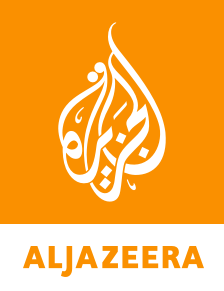People of Gaza are starving, and one of the only ways they can get any food is to risk death by going to an aid distribution point run by the notorious Israel- and United States-backed Gaza Humanitarian Foundation (GHF).
Al Jazeera’s Sanad agency has analysed satellite imagery of the GHF aid distribution centre in the Shakoush area of Rafah, taken on July 13.
We trace the journey of desperately hungry people waiting for hours, sometimes days, to walk a gauntlet of Israeli tanks, armoured vehicles, and drones where they risk being shot by Israeli soldiers.
Here is what they have to go through:
How do people get into the centre?
It is nowhere near as simple as “getting there”. People are allowed to take vehicles or carts up to a particular point, after which they have to disembark.
This point is at least 1.5km (0.9 miles) from the distribution centre, which means that they would have to walk back that distance carrying whatever sacks or boxes of food they can get.
To try to make sure they get something, people start arriving hours or even days before the centre distributes. Once they arrive, they do not leave because they do not want to lose their spot, as some have walked for hours already to get there.
What is ‘al-Joura’?
Wanting to avoid waiting out in the open, people hurry over a distance of about 560 metres (1,800 feet) past an Israeli barrier to “al-Joura”, a sandy pit between dunes, where they seek cover from Israeli bullets and settle in to wait for an unknown time.
The physical hardship is compounded by unbearable heat and long waits, as families often arrive 12 to 24 hours early to wait for a “go signal” to get some food.

What happens when the ‘go signal’ comes?
Usually, hearing the “go signal” – normally from hovering drones – means people can approach the aid distribution point, which is still about 1km away (0.6 miles).
But things often do not work that way, and the risk of getting shot increases dramatically from here.
In addition to complete military control over Rafah, the Israeli army has barriers and numerous military vehicles encircling the aid distribution point.
Witnesses say Israeli sniper nests, drones and military outposts reinforce this control.
The displaced Palestinians wait for a signal from the Israeli military, which tells them that it is safe to go to the aid site. However, witness reports say people were shot at even when they waited for a “go signal” to head to the centre.
Video published by Palestinian activists on July 14 showed Israeli fire at crowds in al-Joura, moments before they approached the distribution gate.
On July 12, Israeli forces killed 34 people waiting for food aid at the GHF site.
So, the people who make it to the distribution centre are OK?
No, not always.
In addition to the general mistreatment that Palestinians face at the hands of Israeli soldiers, video has emerged of soldiers pepper-spraying Palestinians as they approach the centre.
What is it like to actually get aid?
For those people who get to the centre’s doors, the struggle is nowhere near over.
Journalist Muhannad Qeshta, himself displaced from Rafah, discussed the aid distribution process with Al Jazeera.
He described scenes of chaos fuelled by poor coordination, a lack of clear distribution schedules, and a total absence of measures to organise the crowd.
People rush into the centre, where tables have been set up with aid packages haphazardly piled on top. It becomes a free-for-all, with desperate people pushing and fighting to get any amount of food they can manage.
Most end up leaving empty-handed due to the overwhelming demand and limited supplies, with no order imposed on who gets an aid package.
Those who do get some food have to make their way back up the same road where hundreds or thousands of hungry people are still trying to fight their way into the aid centre.
Struggles have broken out as desperate people try to snatch food out of each other’s arms.
Who are aid victims?
On Sunday, the Palestinian Ministry of Health posted a press release on its Telegram channel, providing an update on “aid victims”.
The ministry said over the past 24 hours, 31 people had died and more than 107 injured as they arrived at hospitals. This raised the total number of “livelihood victim” deaths to 922 and injuries to 5,861.
On July 16, at least 21 Palestinians were killed during a stampede while trying to receive food rations.
According to a United Nations-backed assessment released in May, one in five people in Gaza are currently facing starvation as a result of the Israeli blockade on food and aid, while 93 percent of the population is suffering from severe food shortages.
Why is GHF ‘notorious’?
Facing international pressure to let aid into Gaza and wanting to sideline the already established UN and international agencies working there, Israel proposed the GHF, claiming it needed to keep aid from being diverted to the Palestinian group Hamas.
Israel did not present any evidence of food and medical aid being diverted to fighters or being used for anything other than their intended purpose.
The UN and humanitarian organisations contend that the GHF plan violates fundamental humanitarian principles.
UN humanitarian chief Tom Fletcher told the Security Council in May that the GHF “restricts aid to only one part of Gaza while leaving other dire needs unmet”.
He argued that GHF makes aid conditional on political and military objectives, turns starvation into a bargaining tool and serves as a “cynical sideshow” and a “fig leaf for further violence and displacement”.
Eleven humanitarian and human rights organisations signed a statement in which they deemed the GHF “a project led by politically connected Western security and military figures, coordinated in tandem with the Israeli government”.

 3 months ago
102
3 months ago
102
















































